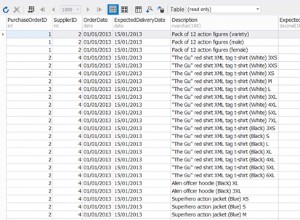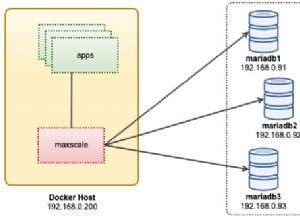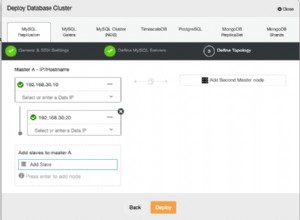Sie haben entweder eine E-Mail-Tabelle mit einem Fremdschlüssel, der entweder system_id, account_id oder customer_id ist. Dann können Sie ein Feld haben, das den Typ dieses Fremdschlüssels angibt. Eine andere, kompliziertere Strategie wäre, immer noch die E-Mail-Tabelle, aber keinen Fremdschlüssel zu haben. Eine weitere Tabelle, die Sie email_relation nennen würden, besteht aus der email_id und dem Fremdschlüssel. Auf diese Weise könnten Sie eine E-Mail-Adresse für alle drei Tabellen verwenden.
Beispiel für die Verwendung von zwei Tabellen
system
--------
s1
s2
s3
account
--------
a1
a2
a3
customer
--------
c1
c2
c3
email
------
e1 [email protected]
e2 [email protected]
e3 [email protected]
e4 [email protected]
email_relation
---------------
email_id foreign_id relation_type
e1 s1 system
e1 a1 account
e1 c1 customer
e2 c1 customer
e3 c2 customer
e4 a3 account
e4 c3 customer
wenn Sie die Kundentabelle mit E-Mail-Adresse wünschen
select c.customer_id, e.email
from customer c
left join email_relation r on (r.foreign_id = c.customer_id and relation_type = 'customer')
left join email e on (e.email_id = r.email_id)
where r.email_id is not null
Wenn Sie möchten, dass alle E-Mails an ein System gesendet werden, können Sie auch
select e.email
from email e
join email_relation r on (r.email_id = e.email_id and relation_type = "system")
where r.foreign_id = 1




